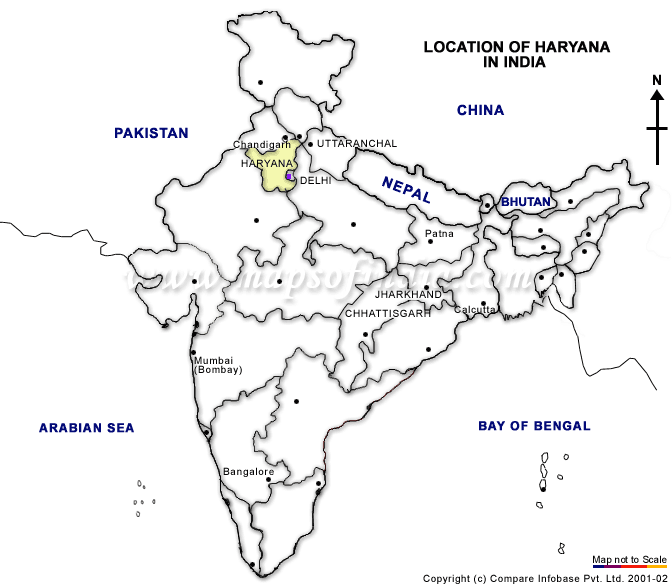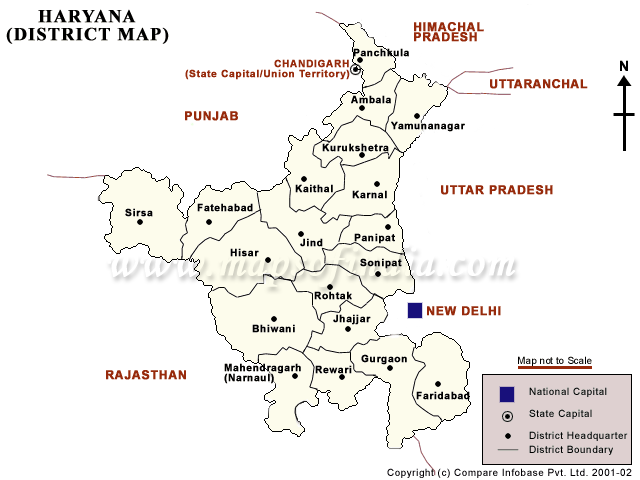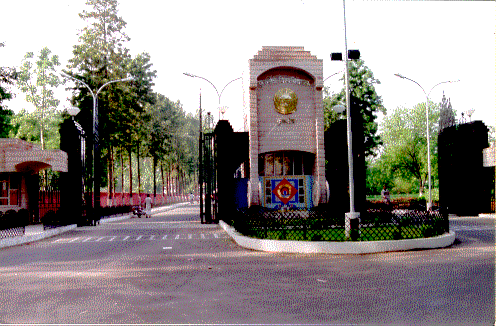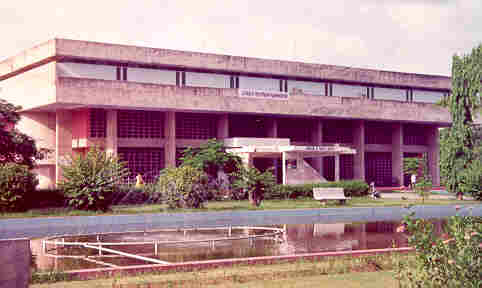|
** THE ANCIENT CITY OF SRINAGAR (GARHWAL) AND H.N.B. GARHWAL
UNIVERSITY, SRINAGAR (GARHWAL), UTTARAKHAND HIMALAYA**
SRINAGAR CITY:
Being the royal capital of the erstwhile rulers of Garhwal in the past, variously
known as Sripur, Srikshetra and Danush Teertha, it remained capital of Garhwal kingdom till 1805 AD; thereafter the centre
of Gorkha rule till 1850 AD and administrative centre of the British till 1890 AD.
 
 Plates: Natural Landscapes around Srinagar Plates: Natural Landscapes around Srinagar
"The Abode of Gods, Devbhumi or Tapobhumi", it how find mention in mythology and religious
literature. Srinagar is situated at 300 13' N /780 46' E in Pauri District of Garhwal region of Uttarakhand
on the bank of river Alaknanda in Lesser-Himalaya. The historic township
enroute to the supershrine resorts of Sri Kedarnath and Sri Badrinath and the important hill stations of Gwaldam and Auli.

Plate: Location of Srinagar in Pauri District of Uttarankhand
(For Location of Uttarakhand in India and Select Maps of Uttarakhand Click link for Roorkee City and Cantt. and Uttarakhand
in this website)
Srinagar is well linked by road to all the prominent places of the region,
including the nearest rail heads- Dehra Dun, Rishikesh and Kotdwar. Sri Nagar is gradually becoming a business hub in
upper hills. Of late, Srinagar has strongly emerged as a centre of higher learning and research with the establishment of
the University.
H.N.B. GARHWAL UNIVERSITY:


Plate: HNB Garhwal University Monogram
I am registered as a research scholar, for Doctor of Philosophy (Engineering
Geology) programme, with the PG and Research Department of Geology, HNB Garhwal University, Srinagar. I've two guides
for my research work. One from aforesaid department (Dr. Y.P. Sundriyal, Reader) and another from the Department of Earth
Sciences, IIT Roorkee, Roorkee (Dr. R. Anbalagan, Professor).
The Hemwati Nandan Bahuguna Garhwal University
is nestled in the lap of Himalayan ranges in Gharwal region of Indian Himalaya, with its headquarters in Srinagar. Inception of Garhwal University on Dec.
1st 1973, under the U.P. State Act, was the fulfillment of a long cherished dream of the local people. The university
was rechristened as Hemwati Nandan Bahuguna Garhwal University in 1989 in commemoration of the memory of a leading statesman
of the country and the son of the soil, Shri Hemwati Nandan Bahuguna.The University is residential cum affiliating in nature,
with jurisdiction over seven districts of the region.
The University offers Undergraduate, Post Graduate and Research
Programmes in various basic, applied and professional streams including Arts, Sciences, Commerce / Business Studies, Hotel
Management, Engineering and Technology, Education, Environmental and Forestry Sciences, Medicine etc. Admission to various
programmes is by both ways i.e. direct/merit and entrance examinations / interviews /presentations etc.
| Campuses |
03 |
| Faculties |
12 |
| Affiliated colleges |
105 |
| Self financed institutions |
54 |
| NAAC grading for the University |
B + + |
PG AND RESEARCH DEPARTMENT OF GEOLOGY, CHAURAS CAMPUS:
|
|
Research work was initiated in this Department
since 1979, when a UGC project on the Quaternary geology of Alaknanda valley was obtained. In the beginning, the research
work was mainly focused on geomorphology, sedimentology and structural geology. With the commencement of an Eco Development
Programme, the research work was carried out mainly in applied geomorphology and environmental geology. However, research
work on sedimentology continued, with focus on the sediments of the Krol Group.
Under applied geomorphology landslide
hazard zonation mapping was carried out in Alaknanda-Dhauliganga and Mandakini valleys. In addition to this, the geohydrology
of springs in areas around Srinagar was also carried out. Research in glaciology was introduced in 1996, with a DST project
regarding Gangotri glacier. Presently, research work is being carried out in glaciology, environmental geology, geohydrology
and Micropaleontology.
The Department has so far organized 5 national level Workshops/Seminar viz. in 1983 (UGC), 1987
(ONGC), 1989 (Rural Development), 2003 (DST) and 2003 (20th IAS convention) |
|
| |
| Research profile of the Department |
| |
 |
Sedimentology |
 |
Structural Geology |
 |
Applied Geomorphology |
 |
Glaciology |
 |
Remote Sensing |
 |
Environmental Geology |
 |
Geohydrology | |
| |
|
|
 |
Wadia Institute of Himalayan Geology, Dehradun |
 |
Indian Institute of Remote Sensing, Dehradun. |
 |
Oil & Natural Gas Corp. Ltd., Dehradun. |
 |
B.H.U. Varanasi. |
 |
Space Application Centre, Ahemdabad.
Besides the Department is also engaged with several research activities with different Institutions
and Universities like IIT, Roorkee (Uttaranchal), G.B. Pant Institute of Himalayan Environment and Development, Almora (Uttaranchal)
etc.
**Related Websites: www.uttara.in AND www.ua.nic.in | |
** THE CITY OF ROORKEE AND IIT ROORKEE**
ROORKEE CITY:
Please visit the link entitled Roorkee and Uttarakhand for detailed information.
INDIAN INSTITUTE OF TECHNOLOGY, ROORKEE:

Brief History: The Roorkee College was established in
1847 A.D. as the first engineering college in British Empire. The College was renamed as the Thomasan College of Civil Engineering
in 1854. It was given the status of the University by Act No. IX in 1948 of the United Province (Uttar Pradesh, now Uttaranchal)
in recognition of its performance and potential and keeping in view the needs of post-independent India. Pt. Jawaharlal Nehru,
the first P.M. of independent India, presented the Charter in November 1949 elevating the erstwhile college to the First Engineering
University of Independant India.

Photo: Main Building, IIT Roorkee

Photo: Central Library, IIT Roorkee

Photo: Information Superhighway Centre, IIT Roorkee
IIT,
Roorkee - Roorkee is among the foremost of institutes of national importance in higher technological education
and in basic and applied research. The Institute ranks amongst the best technological institutions in the world and has contributed
to all sectors of technological development. It has also been considered a trend-setter in the area of education and research
in the field of science, technology, and engineering.
The Institute has completed 150th year of its
existence in October 1996. On September 21, 2001, an Ordinance issued by the Government of India declared it as the nation's
seventh Indian Institute of Technology. The Ordinance is now converted into an Act by the Parliament to make IIT, Roorkee
as an "Institution of National Importance".
The Institute offers Bachelor's Degree courses
in 10 disciplines of Engineering and Architecture and Postgraduate's Degree in 55 disciplines of Engineering, Applied Science,
Architecture and planning. The Institute has facility for doctoral work in all Departments and Research Centres.
Admissions:
B.Tech./B.Arch.: IIT-JEE Exam. conducted by 7 IITs.
M.Sc./M.Tech.* (* Earth Sciences) : JAM Exam. conducted by 7 IITs.
M.Tech./M.U.R.P. : GATE Score and Interviews
Ph.D. (Sciences / Social Sciences & Humanities / Engineering
and Technology) : National Level Joint CSIR-UGC/ UGC and GATE test score / interviews
Ph.D. (Quality Improvement Programme): Institute Criteria
Short Term Certificate Programmes: Direct Admissions / Interviews.
DEPARTMENT OF EARTH SCIENCES, IIT ROORKEE:
Myself is registered as a Research Scholar with HNB Garhwal University,
Srinagar (Uttarakhand). Among the two guides for the Doctoral Programme in Engineering Geology, one is from Department of
Earth Sciences, IIT Roorkee (Dr. R. Anbalagan, Professor - Engg. Geology). Currently I am carrying out my research work
at Engg. Geology laboratory of this department under the supervision of my supervisors.
This department has a prestigious place in departments
of this kind in the country. High quality research work is done and the department is known for the fantastic
results it has produced.
The Department of Earth Sciences, formerly the Department of Geology and Geophysics, was established in 1960. During the
span of four decades the department has become one of the foremost centres of research, post graduate training and consultancy
in the field of Earth Sciences. The department has been recipient of financial aid under the prestigious Special Assistance
and COSIST programmes of UGC (Ministry of Human Resources and development, Govt. of India).
The geological studies in the university date back to the middle of the last century when Colonel Sir Proby Cautley (who
was responsible for establishing the Thomason Engineering College) was elected as a Fellow of the Royal Society, London, for
his pioneering work on the vertebrate fossils of the Shivalik Ranges. Later Henry Benedict Medlicot, who was also admitted
as the Fellow of the Royal Society in 1877, occupied the Chair in Geology and Experimental Sciences at Thomason College.
Presently the department runs three courses viz. M.Sc. (Applied Geology - 2 Years), M.Tech. (Applied Geology &
Applied Geophysics - 3 Years). Research work leading to Ph.D. degree in several interdisciplinary areas and research and consultancy
programmes constitute an integral part of the departmental activities. The faculty is engaged in a number of research projects
sponsored by the Govt. of India agencies like UGC, CSIR, DST, ONGC, AICTE etc, and the consultancy projects sponsored by various
industries, and government agencies. The department has Hamrock Society in which all faculty and students are members.
** THE ANCIENT CITY OF KURUKSHETRA AND KURUKSHETRA
UNIVERSITY**
KURKSHETRA CITY:
Kurukshetra
(Haryana) - The Land of the Sacred Message of Bhagwad Geeta and The Land of the famous battle of Mahabharata :
Kurkshetra is famous for the famous battle of Mahabharata.
In addition to this it is also famous for the Sacred Message of Bhagwad Geeta by Lord Krishna.

Plate: Location of Haryana in India

Plate: Haryana (District Map)
Important tourist destinations include: Braham-Sarover (The Sacred Tank), Sannihit Sarover, Jyotisar (The place of Bhagwad Geeta Message), Sthaneshwar Mahadev
Mandir (Where Lord Krishna used to worship at the beginning and of the day during Mahabharata), Kurukshetra Panorama, Museum
and Science Centre (Managed by National Counsil for Museums, Govt. of India), Draupdi ki Rasoi (Draupdi's Kitchen), Birla
Mandir, Neelkanthi Sanctuary, Kurukshetra University and National Institute of Technology (Formerly Regional Engineering College,
Kurukshetra).
Kurukshetra City is located at Delhi-Chandigarh-Leh National
Highway (Turn Left Inside from Delhi and Right Inside from Chandigarh-Manali-Leh from PIPLI). It is connected from
many important cities of North India via Road and several important Indian cities including Delhi, Jammu, Ranchi, Allahabad
etc. via Rail. The nearest airports are in New Delhi and Chandigarh.
KURKSHETRA UNIVERSITY:
I've passed my Master Degree in Applied Geology from erstwhile
Deptt. of Earth Sciences (Now Department of Geology), Kurukshetra University, Kurukshetra. It was a memorable stay of about
2 years at lush green campus of Kurukshetra University. I miss my stay at Kurukshetra. Here I would like you to let you know
in brief about Kurukshetra and Kurukshetra University.

Plate: Kurukshetra University Monogram

Plate: Main Entrance Gate (Commonly known as 3rd Gate) of the University

Plate: Jawaharlal Nehru Central Library at University Campus
The Kurukshetra University was established in 1956
as a unitary residential
University and its foundation stone was laid by late
Dr. Rajendra Prasad, the first President of India. Itscampus is situated on the western bank of Brahm Sarover (The Holy Tank) and extends overan area ofover
400 acres. Starting with only the Department of Sanskrit,it has grown into a multi-faculty University
as one of the premier centres of advanced study and research in the region.
The University offers various traditional programmes through
the University Teaching Departments (UTDs) and Affiliated Institutions and Colleges in the disciplines of Arts and Fine Arts/
Basic and Applied Sciences/Commerce and Business Management/Hotel Management and Hospitality/Engineering and Technology/Medical
and Allied Fields through Merit and All India Level Entrance Exams. Admission to Under Graduate/Post Graduate
and Research (Ph.D.) programmes in Engg., Science and Professional fields are based on All India Level Entrance Exams.
The University Campus is spread over a large area and is lush
green lawns, a market complex, an Air-Conditioned Auditorium, Rose Garden, Jawahar Lal Nehru Central Library, Hospital, Stadiul-n-Gym,
Geeta Bhawan etc. The campus accomodates on-campus students with well-furnished hostels, separately for Boys and Girls. The
University follows Co-Education. Regualar sessional tests, semester exams. , seminars, study-tours, field study programmes
(in certain programmes), corporate training etc. are the constitutents of different programmes. Besides, the University offers
means-cum-merit scholarships, offered by University Administration, State and Central Governments and Charitable Trusts.
**Related Websites : www. kukinfo.com, www.kuk.edu.tripod.com, www.kurukshetra.nic.in AND www.haryana.gov.in
|

